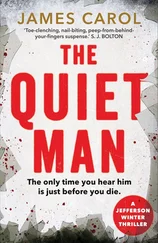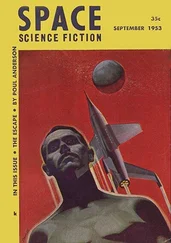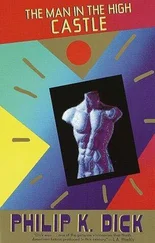When HBO big shots saw what Gaby Monet had done, they were thrilled. It was riveting and compelling and very original. It gave everyone who saw it chills. What made Conversations with a Killer so compelling was the matter-of-fact, truthful way Richard told about the violence and murders he had committed. He didn’t brag or boast; he wasn’t proud of what he’d done. He just told it as it was—the way he saw it and felt it and what had happened—in a calm, detached voice, the camera tight on his face, cold like ice. However, at the end of the piece, when Richard talked about his family, emotion welled up and he struggled to hold back tears. “I hurt the only people in the world that ever meant anything to me,” he said in a strained voice, tears in his leather-colored eyes. This was a part of the Ice Man never seen before. HBO got behind the project and advertised it, and it was aired for the first time in November of 1999.
Overnight, Richard Kuklinski became a homicide superstar. He had told only a very small part of what he’d actually done, but that small part was enough to make Americans stand up and take notice. Conversations with a Killer was critically acclaimed and received overwhelming feedback. The New York Times praised it for “its chilling originality.”
Suddenly, Richard Kuklinski of Jersey City had a distinguished place in the homicide hall of fame. Mail poured into HBO from the public, mostly praising Conversations with a Killer, though some people demanded to know why HBO was “lionizing a cold-blooded killer.”
Gaby Monet’s answer was that Richard Kuklinski was so unique, spoke about violence and murder with such candid sincerity and authority, that it would be, in a sense, a public disservice not to let the world get a glimpse into his life.
Richard received thousands of letters at the prison, from murder groupies, criminalists, and forensic doctors, reporters and news producers. Suddenly, everyone wanted to talk to the Ice Man. Geraldo Rivera went to the prison to interview Richard; Richard refused to see him. Oprah Winfrey tried to get him to appear on her show; Richard refused. He also received, oddly enough (especially to him), many love letters from scores of women from around the world who wanted to have relations with him. Many women even sent photographs of themselves to him. In some of these the women were buck naked, boldly exposing all their charms. Richard was disgusted by these. He immediately threw them away. He recently explained: Any woman that puts a naked photograph in a letter to a stranger is a pig.
Richard didn’t seem to realize that to these women he was no stranger, because he’d been so honest and candid in Conversations with a Killer. He was the ultimate “bad boy,” thus, to some, the ultimate aphrodisiac. Go figure.
One of them had her legs open so wide, you could see her tonsils, he recently said, making a face.
58. Secrets of a Mafia Hit Man
T he Ice Man Tapes: Conversations with a Killer was such an overwhelming success that Sheila Nevins and HBO decided to do a second sixty-minute documentary featuring Richard. This time George Samuels would have nothing to do with it. In fact, Richard refused to even be in the same room with him.
By now Gaby Monet, an intense dark-haired woman with wise, contemplative eyes, had grown quite fond of Richard. They had had many phone conversations since the first piece aired, and Gaby had come to view Richard as an incredibly interesting man who had a lot to say about a subject few people knew as well as he did: murder. He was, in a sense, the Einstein of murder.
Thus, the second set of interviews, now with Gaby Monet asking the questions, was done at the Trenton State Prison. This time, without the assistance of the attorney general’s office, it wasn’t so easy to get a film crew into the prison, but HBO managed to pull some strings, and Gaby Monet sat down and over a six-day period did a second, much more revealing, candid series of interviews with Richard.
This second documentary was entitled The Ice Man: Secrets of a Mafia Hit Man, and in it Richard was far more relaxed and forthcoming, and for the first time told the world about some of the mob-related murders he had committed. The stress and strain he had when Samuels was asking the questions were gone, and a calm, even demure Richard described the shotgun murder of NYPD detective Peter Calabro. This was an earthshaking revelation. Richard said that at the time of the killing he didn’t know Calabro was a cop (which was true). “But,” he added, “I would’ve done it anyway.”
Secrets of a Mafia Hit Man was aired December of 2001, and again was greeted with both scorn and praise. For the most part it was received well, though some critics wondered if the public should really be subjected to the dark musings of a stone-cold killer; as one reviewer put it: “Some things are better left unsaid.”
Be that as it may, Secrets of a Mafia Hit Man’s rating went through the roof. It was one of the most-watched shows HBO ever aired. Again, mail poured into HBO, praising the network’s courage for bringing a person like Richard from the dark into the light. Hundreds of pieces of mail arrived at Richard’s cell every week. Even more women wrote him, sent him photographs, asked if they could meet with him.
Secrets of a Mafia Hit Man was such an overwhelming success that the powers that be at HBO decided to do still another documentary featuring Richard. This was unprecedented—no killer in the history of television had ever received this kind of attention—but HBO felt Richard was so unique, so colorful and three-dimensional, so scary, that a third documentary was warranted. This one would feature Richard talking with a forensic psychiatrist and would logically enough be called The Ice Man and the Psychiatrist. HBO hired noted psychiatrist Park Dietz to do the interview with Richard.
Now, however, the New Jersey attorney general’s office had suddenly become interested in Richard Kuklinski again. Detective Peter Calabro was, after all, murdered in New Jersey, and detectives from the attorney general’s office were dispatched to the Trenton State Prison to talk with Richard to see what they could find out.
Detective Robert Anzalotti was a nice-looking, baby-faced young man who, coincidentally, had gone to school with Richard’s son, Dwayne. Anzalotti was a tenacious investigator, but he had a nice way about him, was easy to talk to, never took himself too seriously. Married with two young children, Robert Anzalotti was sent to the prison to see if he could get Richard to tell who had ordered the Calabro hit. Anzalotti’s partner was Mark Bennul, a quiet, introspective Asian American who said little but missed nothing.
When the two detectives showed up at the prison, Richard refused to see them. At this point he wanted nothing to do with cops, especially cops for the attorney general’s office. He was surprised that the police hadn’t come around asking questions sooner. He told the prison guard that came to get him to tell the two detectives to contact his lawyer, Neal Frank, which they promptly did, and Detective Anzalotti told Frank that they wanted to discuss the murder of Peter Calabro; Frank relayed this request to Richard by phone.
“Should I talk to them?” Richard asked Frank.
“It’s up to you, Rich. It’s your call.”
Curious, Richard agreed to see them, and thus a whole new can of worms was opened, and that can of worms was one Sammy “the Bull” Gravano.
By now Richard was the most famous prisoner at Trenton State, indeed in any prison anywhere. Everyone, including the guards, had taken to calling him Ice Man, which he liked. Richard also liked his newfound celebrity. He felt he was finally getting just recognition for the “unusual” man he truly was.
Читать дальше












